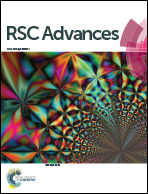Reducing the cytotoxicity of ZnO nanoparticles by a pre-formed protein corona in a supplemented cell culture medium
Abstract
The safety of zinc oxide (ZnO) nanoparticles (NPs) remains a critical concern considering that they are a common constituent in cosmetics and sunscreen formulation. In our study, the cytotoxicity of pristine ZnO NPs in a human hepatocellular carcinoma (HepG2) cell line was found to be significantly reduced when the NPs were pre-incubated in a supplemented cell culture medium for 24 h prior to actual cell exposure. These pre-coated particles developed a stable protein layer on their surfaces, which facilitated further protein adsorption during the cell culture process. The amount of proteins adsorbed on pre-coated NPs was significantly larger and the affinity between the NPs and proteins was stronger, which inhibited both ROS generation and ZnO dissolution and resulted in lower cytotoxicity compared to pristine NPs. Our studies on the continued evolution of a hard protein corona on ZnO NPs in a supplemented cell culture medium and its effects on cytotoxicity demonstrate an effective and convenient way to achieve safe biomedical and environmental applications of ZnO NPs and may be extrapolated to other classes of engineered nanomaterials.


 Please wait while we load your content...
Please wait while we load your content...